Billiard Chalk
Billiard Chalk ( now know in the U.K. as Snooker
Chalk)
The following is taken from Norman
Clare's lectures :-
I should perhaps also briefly refer to
the Billiard Chalk. It seems that chalk was used on the ends of
cues even before the leather tips were used, in order to try and
prevent or reduce miscuing. It is perhaps interesting to note that
even today we use ordinary white chalk on the wooden chuck in a
lathe in order to grip a Bowling Green Bowl firmly during the
turning process. Originally the chalk used was white, but this made
such a mess of the playing surface that the green and blue Chalks
were introduced, which were not so noticeable on the green playing
surface of the Billiard Cloth.
Note - Now other colours of
chalk are available due in no small part to the range of coloured
pool table cloth available
The earliest reference I have found
concerning the use of chalk in order to give the cue a better
"bite" or "grip" seems to indicate that during the 1820's Edward
Bartley of Bath first used chalk in order to apply "screw" or
"side" to Billiard Balls, having discovered the advantages of using
chalk for this purpose he astonished the spectators by the shots he
was then able to play.
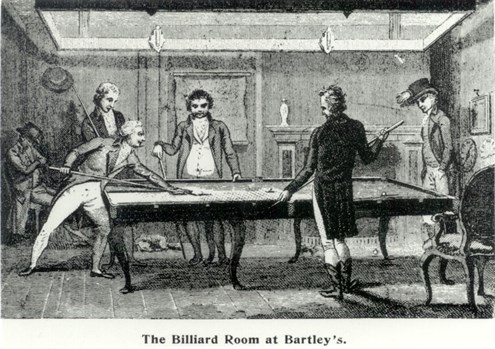
John Carr, who acted as marker, came to
know the secret, and apparently made a small fortune by selling
"twisting chalk" to other players, with the promise that they would
be able to perform similar shots, and as many players will admit
chalk on the tip of a cue certainly makes a tremendous difference
to the players ability in controlling the cue ball.
Billiard Snooker Chalk is a manufactured
commodity, and can vary in texture and quality tremendously.
Present day chalks contain a considerable quantity of abrasive
matter, and I have been told that in recent years before the war,
one well known American Chalk of the brand name "Spinks" actually
contained finely ground glass.
(End off section from Norman
Clare's lecture)
We have in the collection quite a
comprehensive range of chalks, some with odd shapes, some with
advertisement from the firms who sold the chalk. They make quite an
interesting part of the collection in their own right and so the
following pictures show the types we have on display. We also have
some chalk related items such as the magnetic chalk holders and
ceiling chalk holders . So these will also be included in the
gallery.
Some of the chalk age can be guessed at
based on the 'old' billiard firms names but the chalks are not in
any particular order other than when the pictures were taken unless
otherwise stated.
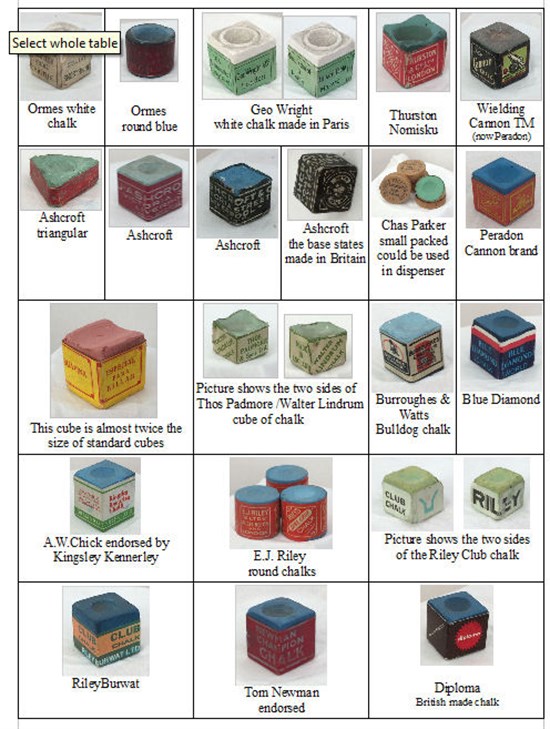
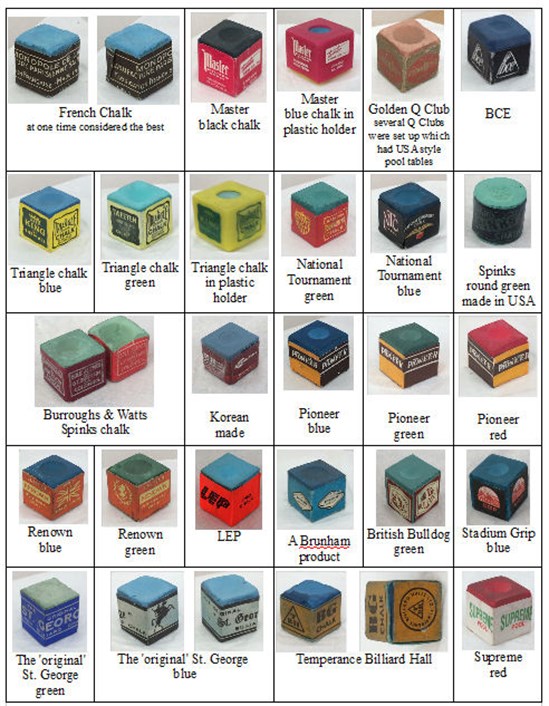
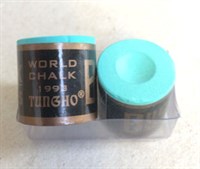
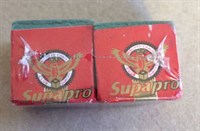
1993 Tungho World Chalk Green
Supapro Green Chalk
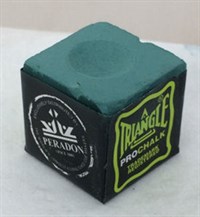
Triangle Pro chalk introduced
in 2016
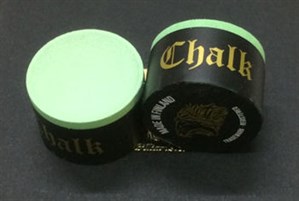
Taom Chalk from Finland introduced
in 2017
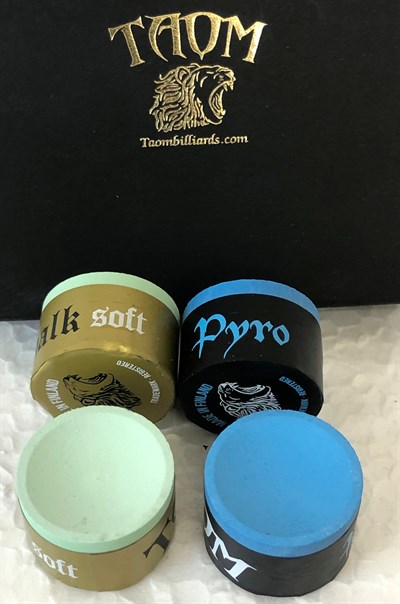
in 2018 Taom introduce two new
versions of their chalk
the 'soft' green version and the
'Pyro' blue
We also have a collection of chalk
boxes, some of which give information about where it is made and
the firm supply or distributing the product.
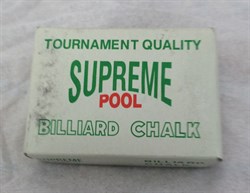
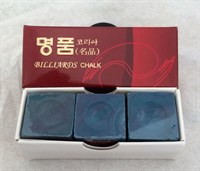
Box of
6 cubes imported chalk
Box of 3 cubes - Korea
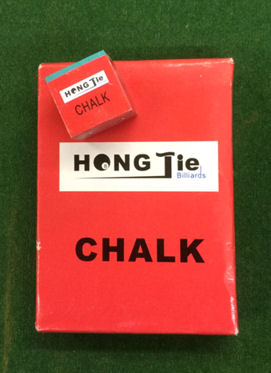
Box of 6 cubes imported
chalk
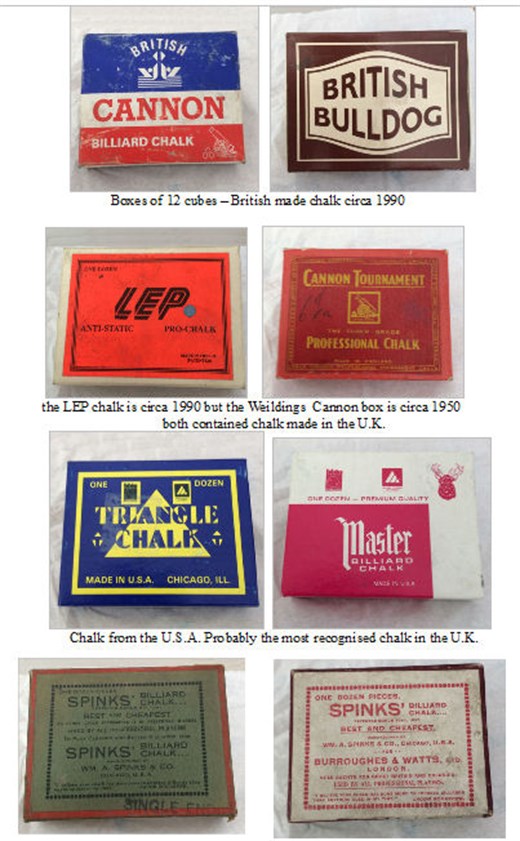
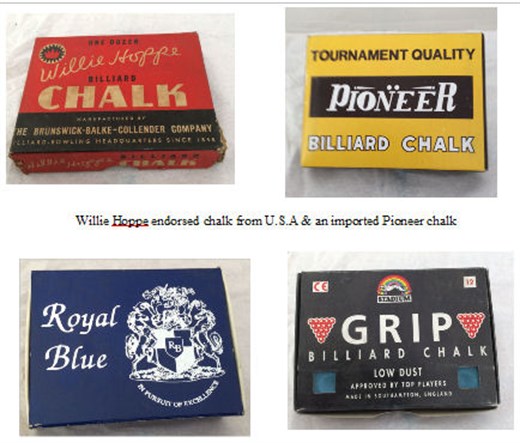
Royal Blue a U.K. made billiard chalk; the Stadium calk also
made in the U/.K. by the same manufacturers of white finger
chalk
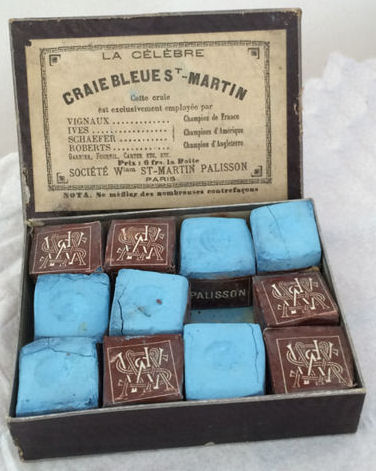
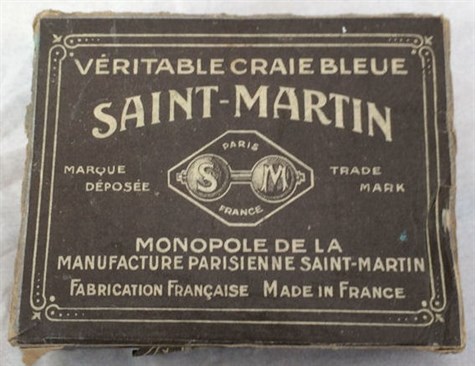
St. Martin
billiard chalk was at one time
considered to be the best chalk avaiable
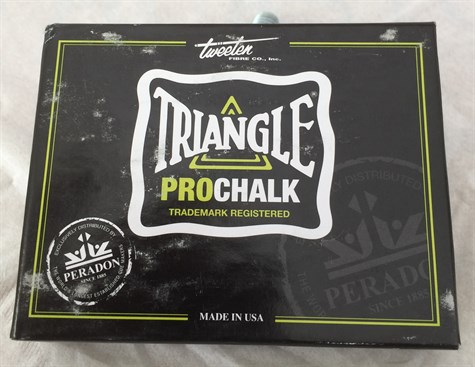
Triangle ProChalk
introduced in 2016 by Tweeten and
made in the U.S.A. in collaberation with Peradon
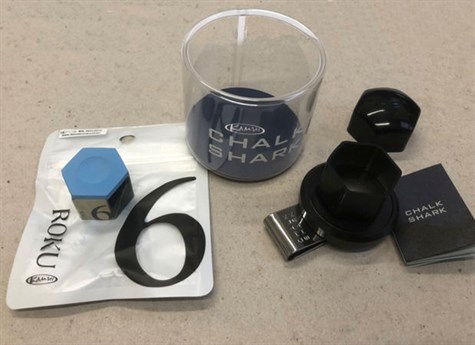
Kamui ROKU Hexagon
Blue chalk with its magnetic belt clip holder
Introduce circa
2018
in 2023 they
introduced Green ROKU chalk
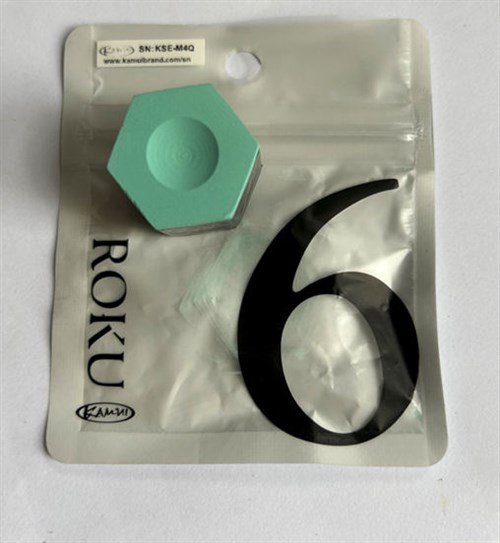
The fact that the
chalk dust can easily soil both the players hands and clothing has
meant that over the years all sorts of devices have been 'invented'
and sold to try and reduce the problem. Perhaps the simplest was
the chalk cup, fixed to the underside of the cushion. This meant
that the player didn't mnee their own piece of chalk.
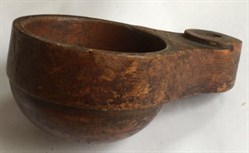
An example of a wooden billiard chalk
cup
(occasionally Thurston have some of
these available for sale - phone +44 (0)151 482
2700)
Other devices have
been ceiling suspended units, using pulleys and weights that kept
the chalk out of the way of play but allowed the player to take
hold of the chalk and pull it down to the tip to chalk their
cue.
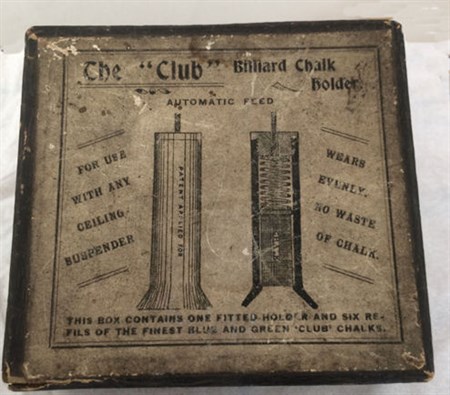
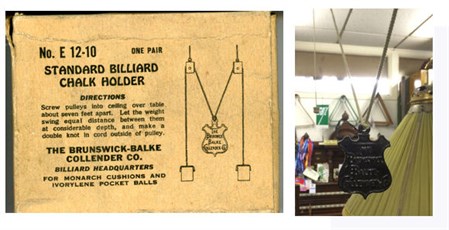
An example
of this Brunswick unit is on display in the collection
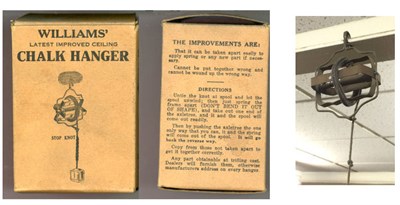
The picture on the
right shows an example of the Williams Chalk Hanger on display in
the collection
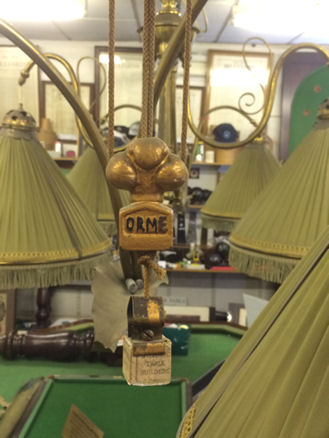
This rather
decorative Orme ceiling chalk holder is another exhibit
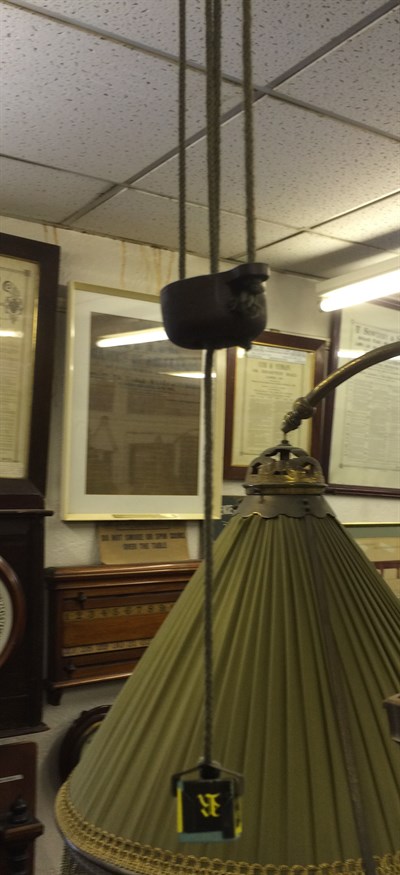
Another somewhat
less sophisticated version of the ceiling chalk
suspender
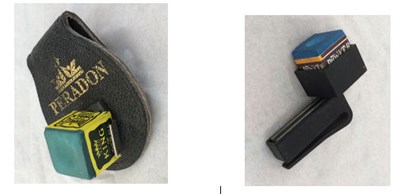
To save players
putting the chalk into their pockets the magnetic holders with a
belt cilp were quite a novel idea which have proved to be
popular.
Perhaps one of the
more bizarre items is a battery operated (sadly not now in working
order) hand held chalker. The unit rotated the chalk and also had a
place to hold chlk dust to use on your bridge hand to allow a
smooth cue action.
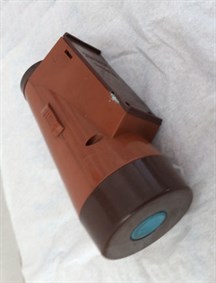
Over the years ways
for Clubs to offer chalk for sale and collect the money without
handling each small cube have been tried. One of the earliest that
we have in the Collection takes round packed pieces like the Chas.
Parker chalks shown earlier in the article.
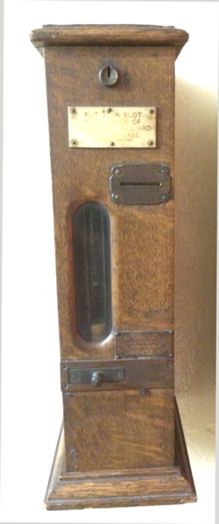
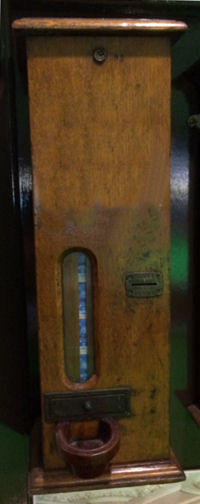
Both these units
charge a penny (old copper £sd penny)
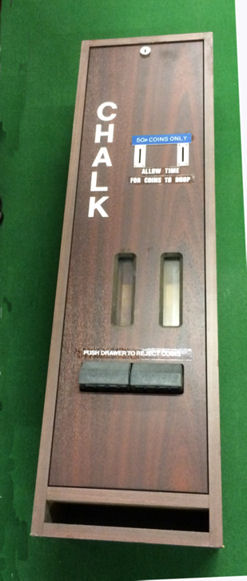
In the
1980/90s the idea was again tried but with a 50p charge
© E.A. Clare & Son Ltd.
2022. © Peter N. Clare 2022
Reproduction of this article allowed only with the
permission
from E.A. Clare & Son
Ltd.
eshop- thurston.co.uk
email -
thurston@eaclare.co.uk
phone -
44(0)151 482 2700

